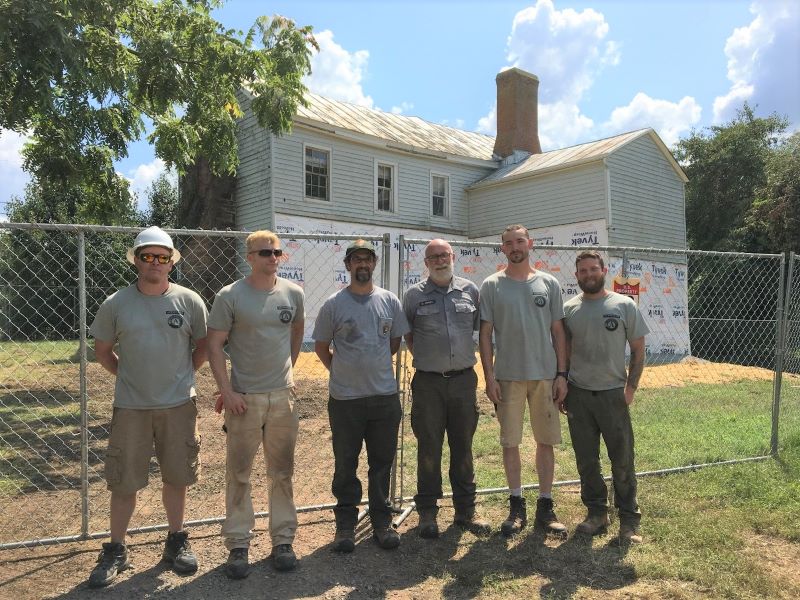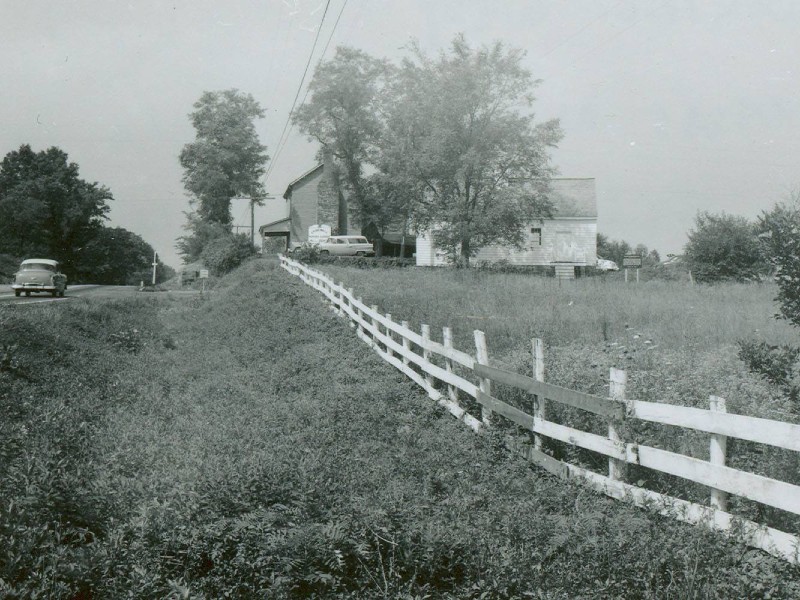Through Campaign for Historic Trades partnership with the National Park Service, the goal is to restore this structure so that future visitors to Manassas Battlefield can learn more of the story of the Second Battle of Manassas that engulfed the property.

A crew of five U.S. veterans in the Campaign for Historic Trades program were assigned to stabilize the structure, which is the first of a three-phase process of restoring the property. During their assignment, the group removed the non-contributing carport and shed that were attached to the house, stabilized the foundation under the crawl space, and weatherized the exterior.
Historical Significance

Manassas National Battlefield Park has recently acquired the M.E. Dogan House, located near the Lucinda Dogan house in the historic village of Groveton. The main portion of the house is post-war, but a portion of the building may have stood during the war, as battle raged on the land surrounding the property.
The Mary Ellen Dogan House (or. M.E. Dogan House) is one of only two surviving structures of the 19th century village of Groveton and is located in a highly visible location of the park. The house was standing largely in its present form as early as 1878, appearing on a U.S. Army survey of the Second Manassas battlefield. A portion of the house shows evidence of an even earlier construction date. The house is significant for its associations with the community of Groveton and its primary residents, the Dogan family of Peach Grove, the pre-Civil War estate on which the village and the M.E. Dogan House are located. The main portion of the house was built during the 1870s and served as a Dogan family residence in the late 19th century. Some historical records indicate that the site also served as a tavern on the Warrenton Turnpike during the 19th century.
The home was likely built or added on to by Mary Ellen’s husband William Henry Dogan, the oldest son of Lucinda Dogan. Lucinda owned the small white house directly next to the M.E. Dogan house, also owned by the park. Lucinda was well known in the community and she and her children (including William Henry) supposedly carried water to wounded soldiers in the make-shift hospital around their home after Second Manassas. In the years after the war local women, realizing that the remains of Confederate soldiers still lay in shallow graves on local farms, decided to establish a cemetery. Mary Ellen Dogan was among those who led the charge and helped establish the Groveton Confederate Cemetery.
